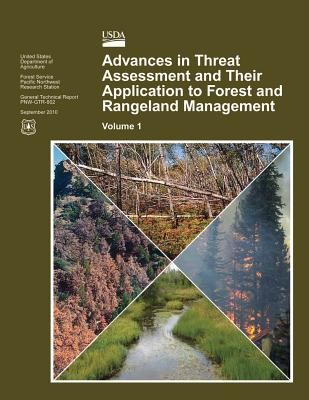
- We will send in 10–14 business days.
- Author: U S Department of Agriculture
- Publisher: CreateSpace Independent Publishing Platform
- Year: 2015
- Pages: 264
- ISBN-10: 1505906946
- ISBN-13: 9781505906943
- Format: 21.6 x 27.9 x 1.4 cm, minkšti viršeliai
- Language: English
- SAVE -10% with code: EXTRA
Advances in Threat Assessment and Their Application to Forest and Rangeland Management (e-book) (used book) | bookbook.eu
Reviews
Description
Forest land conversion leads to ecological effects (e.g., changes in water quality and wildlife habitat) and socioeconomic effects (e.g., expanding urban-forest interface, reduced long-term timber production possibilities and loss of open space). Socioeconomic drivers of land use change such as population totals and personal income levels have increased substantially since World War II. Human land use is the primary force driving changes in forest ecosystem attributes. Land use changes affecting forests since 1990 have been heavily concentrated in the South. Nationwide, more than 60 percent of housing units built in the 1990s were constructed in or near wildland vegetation. More than 44 million acres of private forest are projected to experience housing density increases between 2000 and 2030, with the majority of the most heavily impacted watersheds in the East.
EXTRA 10 % discount with code: EXTRA
The promotion ends in 22d.02:22:18
The discount code is valid when purchasing from 10 €. Discounts do not stack.
- Author: U S Department of Agriculture
- Publisher: CreateSpace Independent Publishing Platform
- Year: 2015
- Pages: 264
- ISBN-10: 1505906946
- ISBN-13: 9781505906943
- Format: 21.6 x 27.9 x 1.4 cm, minkšti viršeliai
- Language: English English
Forest land conversion leads to ecological effects (e.g., changes in water quality and wildlife habitat) and socioeconomic effects (e.g., expanding urban-forest interface, reduced long-term timber production possibilities and loss of open space). Socioeconomic drivers of land use change such as population totals and personal income levels have increased substantially since World War II. Human land use is the primary force driving changes in forest ecosystem attributes. Land use changes affecting forests since 1990 have been heavily concentrated in the South. Nationwide, more than 60 percent of housing units built in the 1990s were constructed in or near wildland vegetation. More than 44 million acres of private forest are projected to experience housing density increases between 2000 and 2030, with the majority of the most heavily impacted watersheds in the East.


Reviews